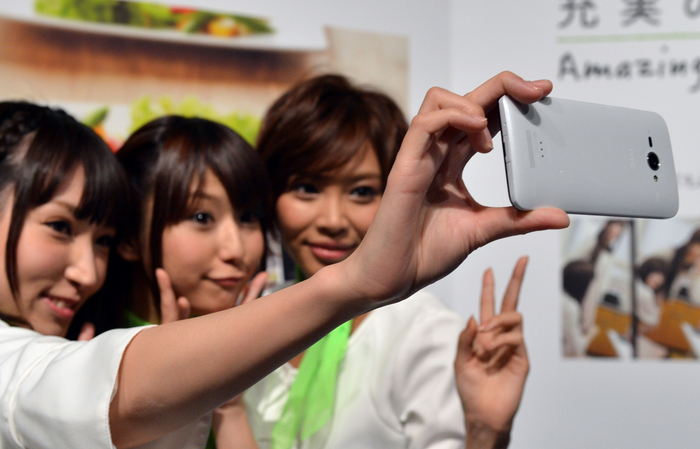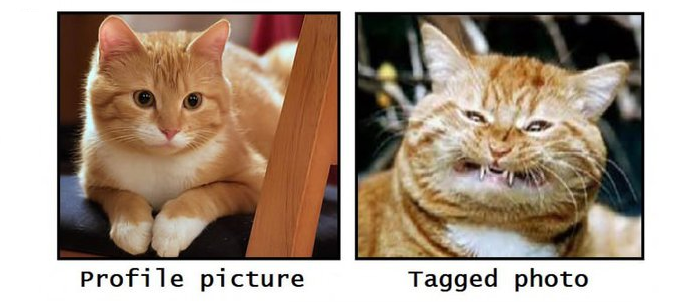
The initial idea behind the first camera phone was to give users a backup when it came to taking photos. If you forgot your regular camera at home and an important event was taking place (or maybe you just felt like taking some pictures) your camera phone was there for you. It didn't take the best pictures, but it got the job done. The camera on the first camera phones didn't really take away from the prime functions of the phone; the more important features of the phone still centered around a phone's ability to receive good reception, size, Bluetooth, and battery.
But now that phones have evolved to become much more than the cell phones we first came to love, the idea of having just your basic camera on your phone needed to be improved upon; you can't just have fantastic media-sharing devices like these with a 0.3-megapixel camera on the back. You need something bigger, something better, something that could essentially replace whatever you previously carried. The camera aspect of our phones went from being a mere bonus to being one of the most important features to sell a smartphone today. We went from having 0.3-megapixel to 1.3, 2.0, 3.2, 5.0, 8.0, and now up to 13.0 and even 41-megapixel cameras - in our phones! The highest megapixel count on a phone camera is 25-megapixels higher than what my actual digital camera can handle. Technology is insane sometimes.
At some point, having one camera on the phone wasn't enough. With the introduction of Apple's FaceTime and other applications like Skype, companies began to see the benefit of including a lesser camera on the front of the device for video calling features. This allows the user to see who they're talking to in real-time, and also see how they look in the corner of most applications. Front-facing cameras generally stay several megapixels behind the rear-facing camera simply because their main intent was to provide a practical way for users to use video calling, but as it turns out the front-facing camera has only fed into an phenomenon that has been sweeping across nations since the early 2000's.
Self-portraits, the latest show of vanity. This is the era of narcissistic behavior, where front-facing smartphone cameras, along with their ever-expanding market of photo editing applications, make smartphones the perfect all-in-one device for anybody looking to take a decent picture of themselves - a generation which I am in part of.
The thought hit me the other day when looking up the specifications on BLU Life View, a device that hasn't yet hit the market, but is expected to feature a 12-megapixel rear-facing camera and a 5-megapixel front-facing camera. After reading that the device was supposed to feature a front-facing camera with that high of a megapixel count, my first thought was something along the lines of "That's great, this device would be great for taking pictures of my face!" Then I realized how weird and egotistical that sounded, even in thought, but it's true. I trust nobody but myself to take decent pictures of myself, and it's all because of the generation I am a part of.
I got my first digital camera around the same time I signed up for a MySpace account. MySpace encouraged users to upload a profile picture much like any other social media platform does today. This helps other users put a face to the name. My first picture I posted was of me at a holiday event with my family, but as I gained more friends I realized that my picture wasn't nearly as cool as the over-contrasted and over-saturated pictures that my friends were using. Most of them didn't even look like themselves after all of the editing they had done, but the pictures looked edgy and cool. I wanted to be a part of that. So it was about that time that I joined in the self-portrait phenomenon. My friends commented positively on my new pictures, whereas nobody said anything about my old, normal picture. That little bit of reassurance was all I needed to continue taking self-portraits. I don't trust anybody else to take good pictures of me anymore. If you see a picture of me on the Internet, it's likely taken by yours truly. I suppose it can be seen as a way to express ourselves without having to drastically change our hair, clothes, or anything like that. You just take a photo from a good angle and edit the bejeezus out of it.

Applications like Instagram, Afterlight, and any other software that applies various photo filters to images caters to people like us. Why? Because we think we look like crap without the filters. It's digital make-up. We can't stand the sight of our imperfections, so we strive to make people see what we look like without it. The use of a front-facing camera goes hand-in-hand with editing, because it only makes it one step easier for us to take the perfect self-portrait. No more second guessing where I will be in the shot - I'm right where I want to be, the camera is right where it needs to be, and it takes out several minutes of guesswork just to take one good photo of yourself. That's one half of the equation that we don't have to worry about anymore.
The only problem with it is that front-facing cameras, which generally have a 2-megapixel count max, are far from taking the clear images we would rather see from the camera on the back. Now that it seems that the megapixel race has calmed down thanks to the debunked theory that megapixels are the only part of a camera that matters, I wonder if manufacturers are going to start focusing on front-facing cameras and closing in on the gap between the two cameras. After all, in this era it seems that the front-facing camera is just as important, if not more important, than the one on the back.
Readers, what are your thoughts on the subject? Do you think it will be long before front-facing cameras start becoming more important than the rear-facing cameras, do you think that rear-facing cameras will always take precedence over front-facing ones? Share your thoughts with me in the comments below!
Images via HTC, The Verge, We Know Memes